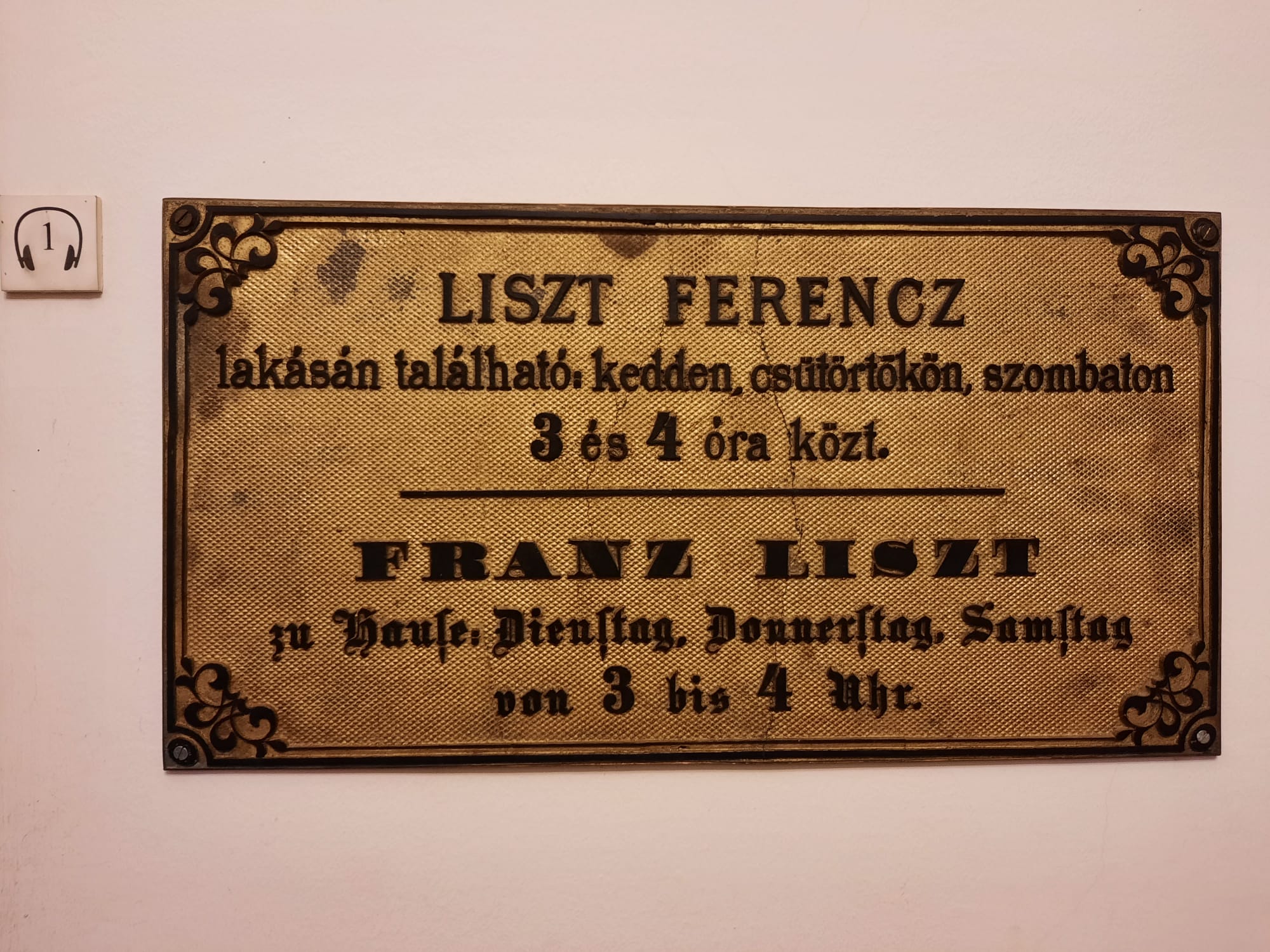Liszt Ferenc Emlékmúzeum (Franz Liszt Memorial Museum), Budapest
Franz Liszt’s part–time residence in Budapest from 1876, the Royal Academy of Music’s Franz Liszt Memorial Museum provides an excellent opportunity to learn about his career as a piano virtuoso, composer and teacher.
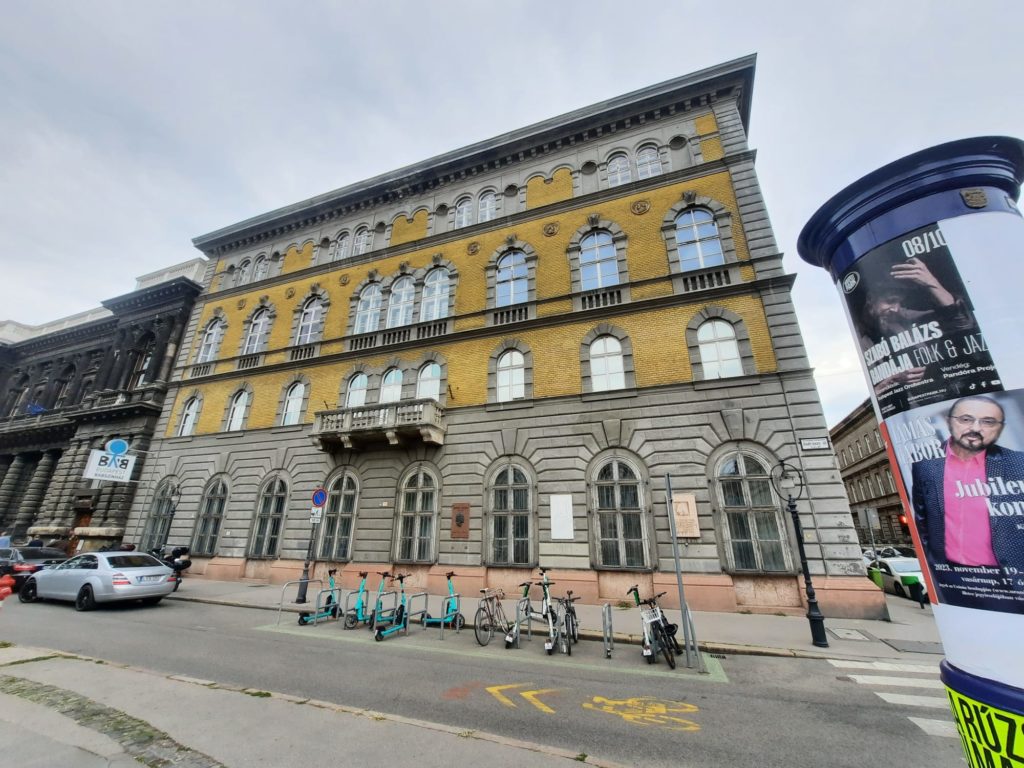

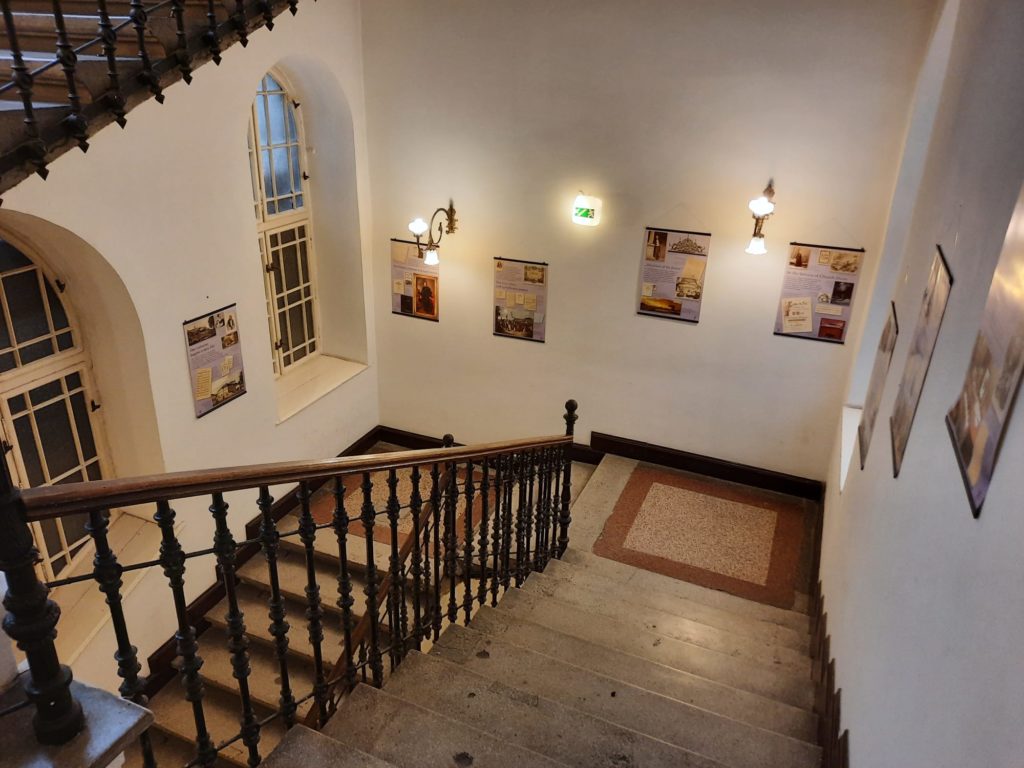

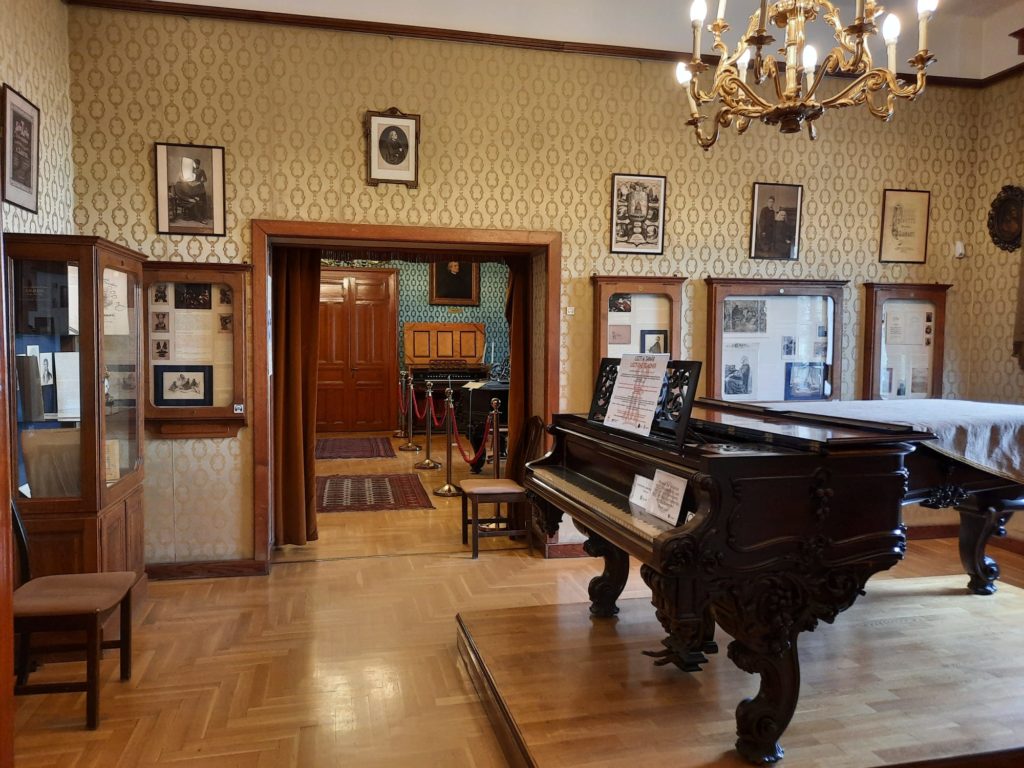

Liszt Ferenc, AKA Franz Liszt
Before visiting the Franz Liszt Memorial Museum (Hungarian: Liszt Ferenc Emlékmúzeum), what I knew about Liszt could have been written on the back of a postage stamp. In fact this was the museum’s appeal. The Urban Geographer and I had a couple of hours spare during a long weekend in Budapest, and tossed a coin between this museum and one dedicated to Ignaz Semmelweis, with whom I am now much more familiar. I was pleased when the coin decided in favour of a brand new topic.
After my museum visit, I am now much more conversant with the facts of Liszt’s life. Liszt Ferenc (Hungarian names are surname-first) was born to parents Anna and Adam in 1811. His father was a pianist and composer in the service of Austro-Hungarian Prince Nikolaus II Esterházy. Adam began teaching young Franz to play the piano at age seven, and he began rudimentary compositions at age eight. After appearing in a series of concerts aged nine, some wealthy benefactors offered to finance his musical education in Vienna.
Let’s summarise very briefly (because we don’t have much space here). Liszt’s career as a composer, and particularly as a performer, led him to become a 19th Century superstar. Fans would fight over his discarded handkerchiefs and gloves. And an astonishing number of Budapest society women embroidered furniture for him. His compositions, as well as his teaching, focused on feeling. He was of course incredibly technically proficient, but felt that playing music had to reflect a personal style and inner emotion. His compositions, particularly those intended to evoke a narrative or descriptive element (program music or symphonic poems), and those with unresolved dissonance or atonality, prefigured 20th Century movements in music.
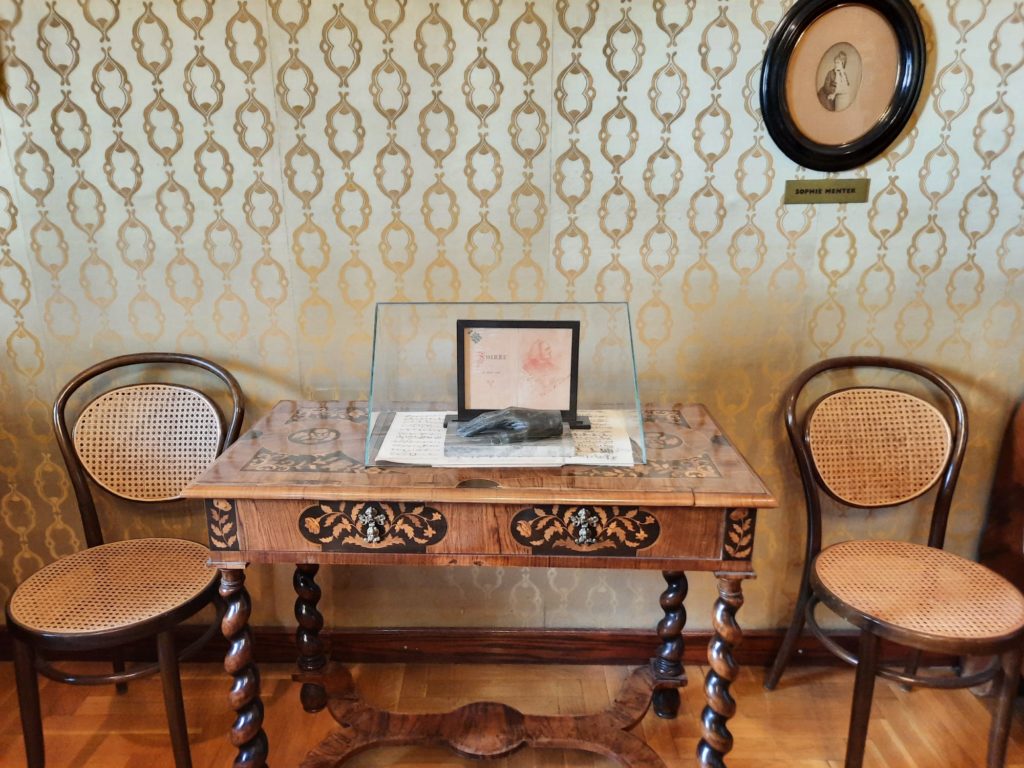

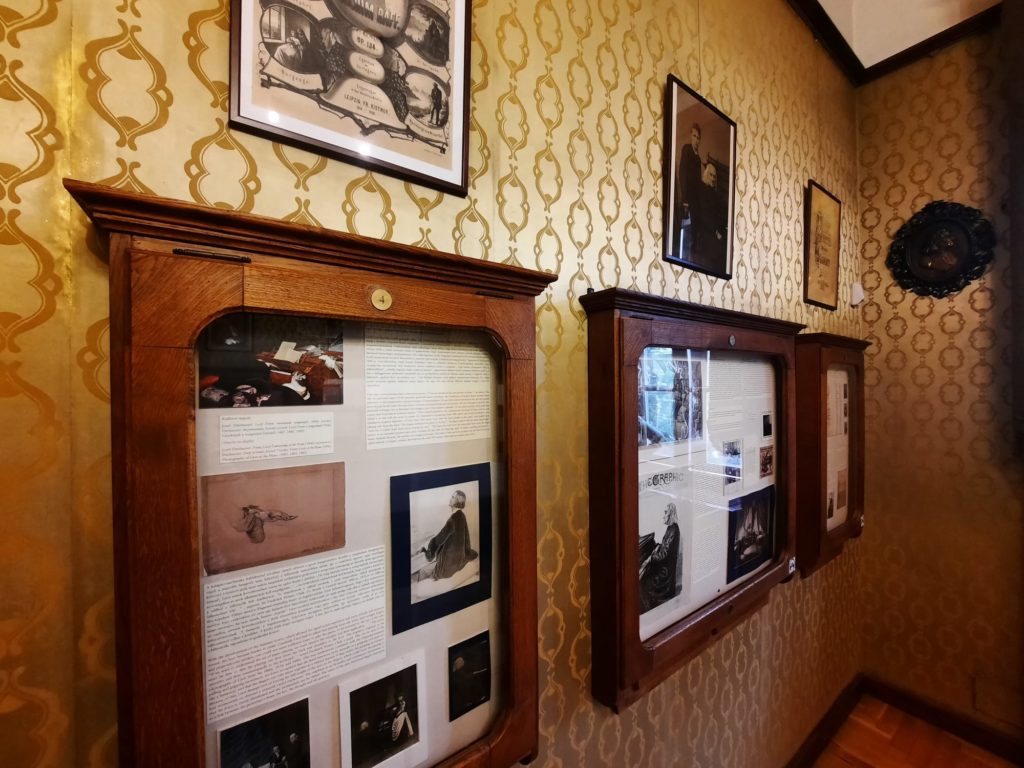
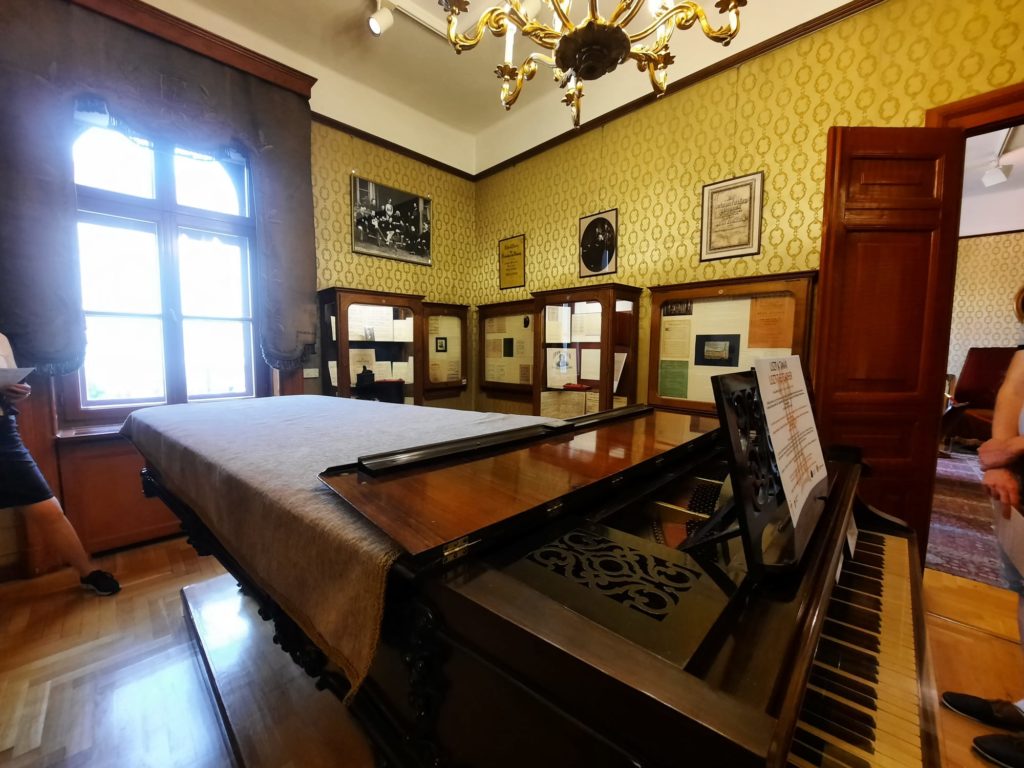

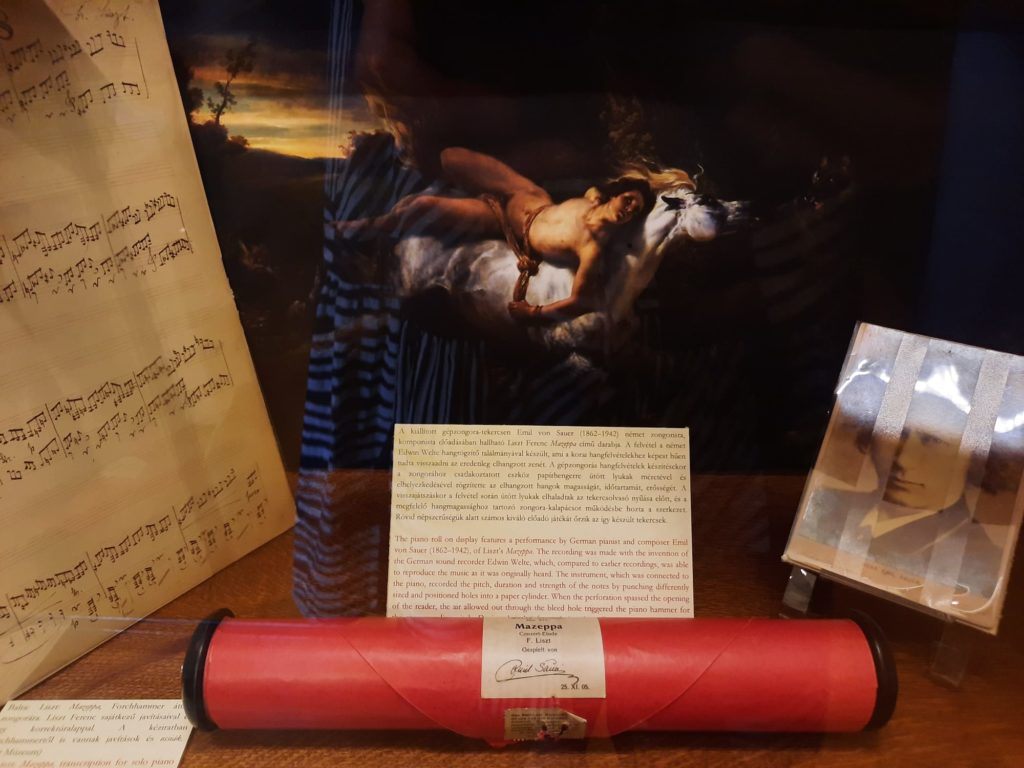
Franz Liszt Memorial Museum
The Franz Liszt Memorial Museum is part of Budapest’s Royal Academy of Music (now the Franz Liszt Academy of Music). In the 1870s Liszt lived between a couple of European cities; Hungary was keen to bask in his reflected glow. He was thus named President of the then newly formed academy, with a healthy stipend and rooms at his disposal. He was only ever a part-timer though, normally coming during the winter, teaching a little, and leaving in the spring before exams took place. Liszt never married despite at least two long-term relationships and three children, so his rooms here were modest. There’s just a study-bedroom, a dining room, and a drawing room.
After Liszt’s death in 1886, the rooms were converted into classrooms. Some Liszt memorial rooms were first set up in another building of the Music Academy in the 1920s, with restoration of these rooms and the establishment of a Memorial Museum only happening in the 1980s. As museum experiences go, this is quite a charming one. The Music Academy itself is a blink-and-you’ll-miss-it affair from the street. Although we knew where we were heading, we almost walked past the building and its modest signage. Once inside, it is very reminiscent of old academic buildings everywhere: well-worn corridors and information posted everywhere on the walls.
Heading up one flight of stairs the museum itself is a little easier to spot. Tickets paid for and laminated information in hand, we headed inside. The museum collection contains a substantial number of objects once owned by Liszt. We saw his little bed, a clever desk-cum-piano presumably for composing, all that furniture embroidered by his fans, and objects preserved as mementos. The former dining room now plays host to temporary exhibitions in a series of vitrines around the walls.

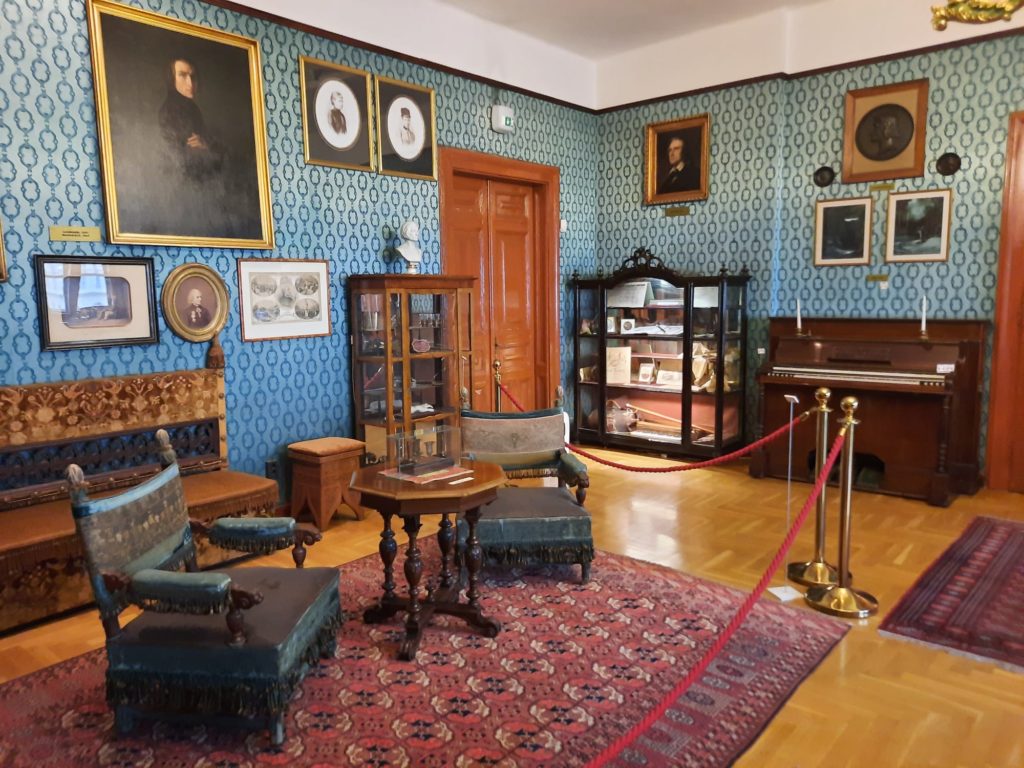
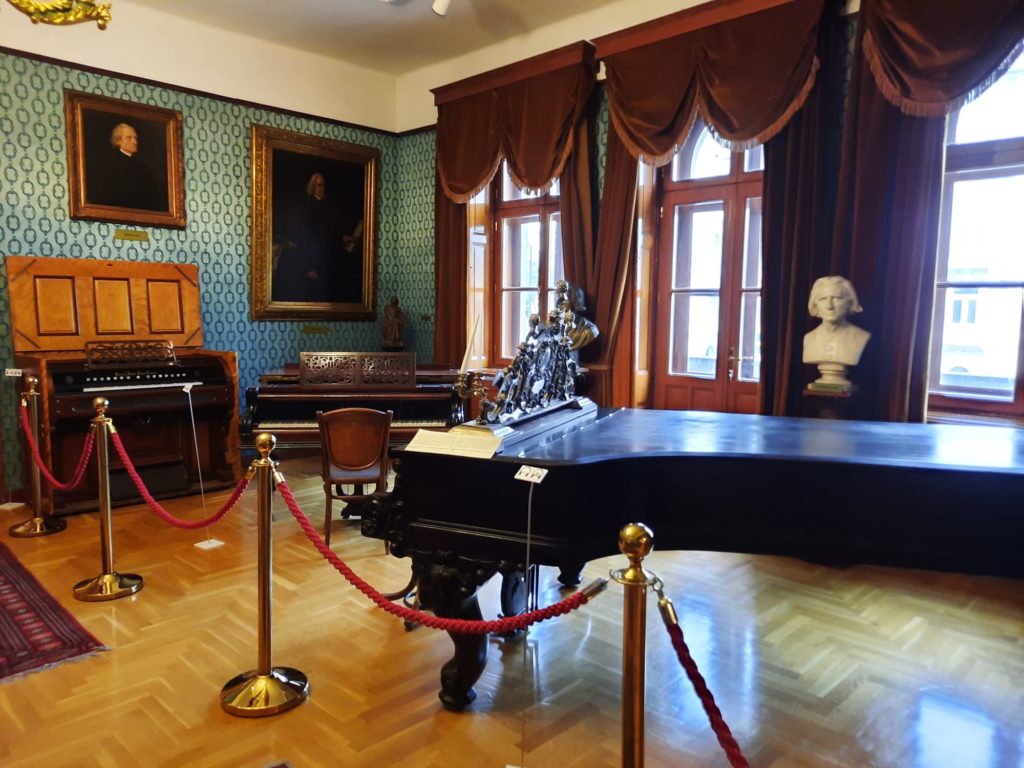
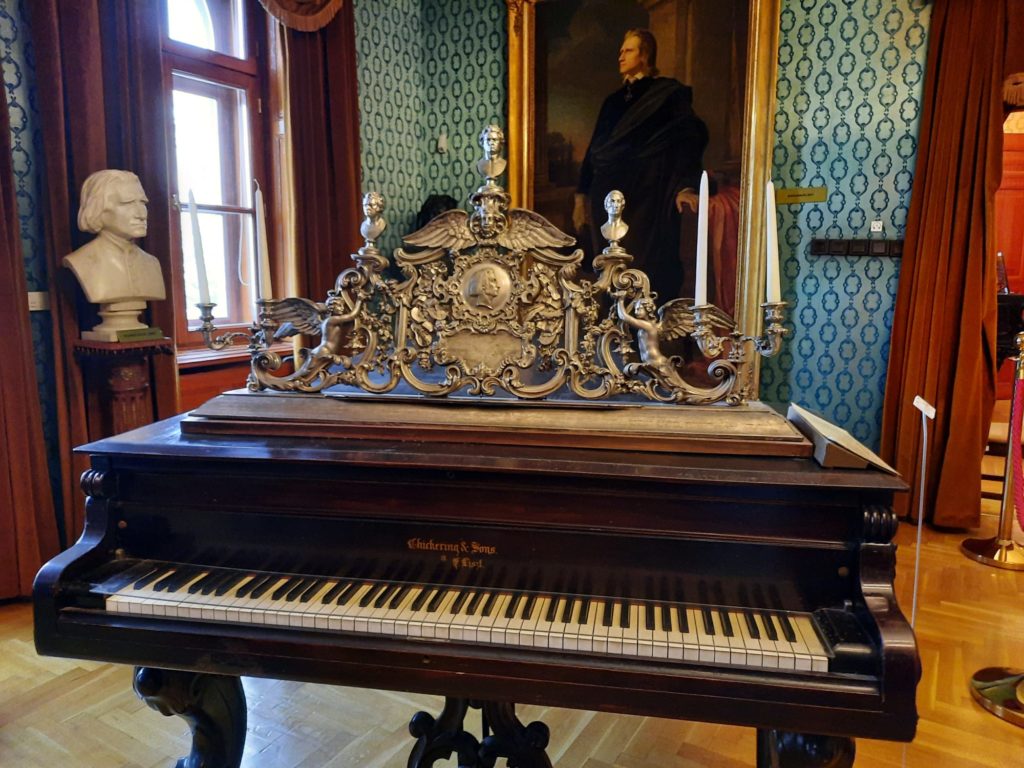

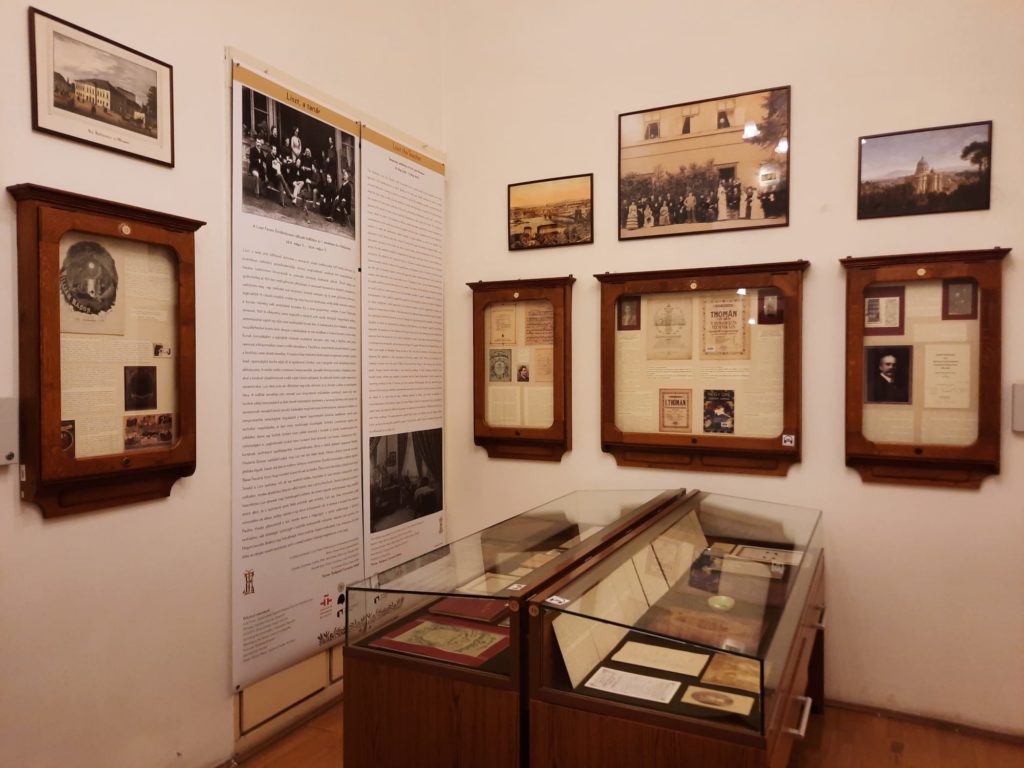
Museum And A Concert?
The Franz Liszt Memorial Museum is a relatively small affair. Visitors without much time to spare can still get a good sense of it. The Urban Geographer and I lingered a little longer than we may otherwise have done, for reasons of timing. Don’t forget, the museum is part of the Liszt Ferenc Academy of Music. As such, there is a concert just next door to the museum every Saturday at 11, right about when we visited. This meant there was a rush for tickets as we arrived, but the upside was that once the concert was underway we could hear the music through the wall of Liszt’s drawing room. You could also get tickets for the concert and visit the museum separately, but the way we did it made for an atmospheric experience.
If you’re looking for a small, self-contained museum during a trip to Budapest, the Franz Liszt Memorial Museum is definitely one to consider. It’s very close to the House of Terror Museum, or can be combined with a visit to Heroes’ Square and City Park. I came away with a much better sense of Liszt’s life and career, as well as the phenomenon of ‘Lisztomania’, a precursor to today’s celebrity culture. It felt like a glimpse into Budapest’s music culture past and present.
Salterton Arts Review’s rating: 3.5/5
Trending
If you see this after your page is loaded completely, leafletJS files are missing.

